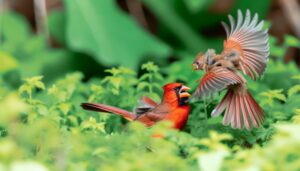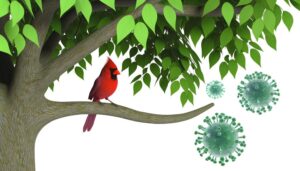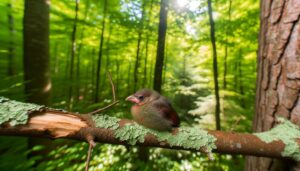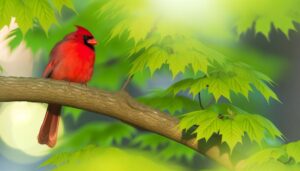Do Cardinals Like Bird Baths?
Cardinals are drawn to bird baths primarily for drinking and bathing. They prefer shallow water, typically around 1-2 inches deep, and approach water sources cautiously.
Ideal bird baths for cardinals feature a gentle slope and a textured surface to prevent slipping. These baths support the birds' hydration and feather maintenance, essential for their health and predation avoidance.
Positioning baths near dense shrubbery provides safety from predators and encourages frequent visits. Keeping the water clean is vital to attract cardinals consistently.
To discover more nuanced strategies for attracting these vibrant birds, several factors come into play.
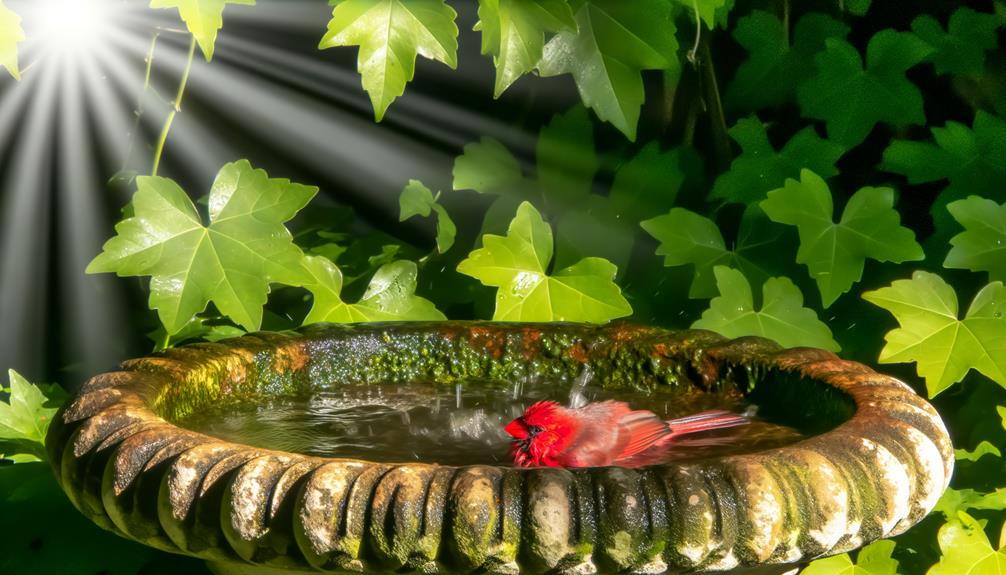
Key Takeaways
- Cardinals enjoy bird baths for bathing and hydration, crucial for their feather health.
- They prefer shallow water, around 1-2 inches deep, with gentle slopes for easy access.
- Placing bird baths near tree cover provides cardinals with a quick escape route from predators.
- Clean, fresh water in bird baths attracts cardinals and supports their overall health.
- Adding natural elements like rocks and branches to bird baths creates a secure and appealing environment for cardinals.
Cardinal Behavior and Water
Cardinals exhibit a distinct set of behaviors when interacting with water sources, including bird baths, which provide valuable insights into their ecological preferences and hydration habits. These birds are known to approach water sources with caution, often perching nearby and observing their surroundings before taking a drink or bathing. This behavior likely serves as a predation avoidance strategy.
Once assured of safety, cardinals will engage in vigorous bathing, flapping their wings and splashing water to clean their feathers. Such actions are essential for maintaining feather health, which is pivotal for thermoregulation and flight. Observations indicate that cardinals prefer shallow water, approximately 1-2 inches deep, allowing easy access while minimizing the risk of drowning.
This behavior underscores their adaptability in utilizing available hydration resources.
Benefits of Bird Baths
Bird baths offer numerous benefits, including attracting a wide array of bird species by providing a reliable water source for drinking and bathing. This simple feature supports avian health by facilitating hydration and aiding in the maintenance of clean plumage, which is critical for insulation and flight.
Consequently, bird baths contribute to the overall biodiversity and ecological balance within their environments.
Attracting Diverse Bird Species
Implementing a well-maintained bird bath in your garden can greatly enhance biodiversity by attracting a variety of bird species, each drawn to the reliable water source for drinking and bathing. This simple addition to your outdoor space can create a microhabitat that supports avian life, leading to increased ecological interactions and observational opportunities.
Different species exhibit varying behaviors and preferences, enriching your garden ecosystem.
- Finches: Often seen splashing energetically, they frequent bird baths regularly.
- Robins: Attracted to shallow water for both drinking and bathing.
- Blue Jays: Known to use bird baths for drinking, especially during hot weather.
- Warblers: Smaller species that appreciate the safety and hydration provided.
- Doves: Prefer gentle slopes to easily access the water.
These visitors contribute to a dynamic and vibrant garden environment.
Promoting Bird Health
A well-maintained bird bath plays an important role in promoting avian health by providing a consistent source of clean water for hydration and bathing, which is vital for their overall well-being.
Regular access to clean water aids in thermoregulation, especially during extreme temperatures, thereby preventing dehydration. Bathing facilitates the removal of parasites and debris from feathers, which is important for maintaining ideal plumage condition and, as a result, efficient flight.
Additionally, clean feathers enhance insulation, aiding in thermoregulation. Observational studies suggest that bird baths can reduce the spread of avian diseases by mitigating the need for birds to congregate at less sanitary natural water sources.
Therefore, bird baths not only attract a variety of species but also contribute significantly to their health and longevity.
Ideal Bird Bath Features
To attract cardinals, an ideal bird bath should feature a shallow basin with a gentle slope for easy access and safe footing. This design minimizes the risk of drowning and allows cardinals to drink and bathe comfortably.
Additionally, the following features enhance the bath's appeal and functionality:
- Textured surface: Prevents slipping and provides better grip.
- Water depth: Between 1 and 2 inches, best-suited for cardinals.
- Material: Natural stone or ceramic, which maintains water temperature.
- Basin diameter: At least 18 inches, accommodating multiple birds.
- Maintenance: Easy to clean and refill, ensuring fresh water availability.
These elements collectively create an inviting environment that encourages cardinals to frequent and utilize the bird bath, enhancing their well-being.
Bath Placement Tips
Positioning the bird bath in a location that offers both safety and accessibility is essential for attracting cardinals. These birds prefer areas with dense shrubbery or tree cover nearby, providing quick escape routes from predators. Observational studies indicate that cardinals are more likely to visit baths situated within 10-15 feet of such cover.
Additionally, placing the bath in a shaded area helps maintain cooler water temperatures, which is vital during warmer months. Ensuring the bath is elevated, either on a pedestal or a secure platform, reduces the risk of ground predators.
Water Depth Preferences
When pondering water depth preferences, cardinals display a clear preference for shallow water, typically around 1 to 2 inches deep, which allows them to comfortably bathe and drink without the risk of submersion. This preference stems from their need to avoid drowning and for efficient feather maintenance. Observational studies indicate that cardinals are more likely to visit bird baths that cater to these specific depth requirements.
Key aspects to take into account for the best water depth include:
- Shallow Basins: Making sure water depth remains consistently shallow.
- Gradual Slopes: Allowing easy entry and exit.
- Surface Texture: Providing a non-slip surface.
- Regular Maintenance: Keeping water free from debris.
- Safety: Minimizing predator access.
These factors collectively contribute to enhancing the appeal of bird baths to cardinals.
Seasonal Considerations
Understanding the significance of water depth for cardinals, it is equally essential to ponder how seasonal changes influence their usage of bird baths.
During summer, cardinals frequent bird baths more often to cool down and hydrate. Conversely, in winter, accessible water sources can become scarce due to freezing temperatures. Providing heated bird baths or placing baths in sunny areas can help guarantee a reliable water supply.
In spring and fall, fluctuating temperatures may affect water availability and usage patterns. Additionally, during these shifting seasons, cardinals might increase their bathing frequency as part of preening behaviors essential for maintaining feather health.
Observing these seasonal dynamics allows for better provisioning of bird baths to meet the cardinals' needs year-round.
Maintaining Cleanliness
Maintaining the cleanliness of bird baths is crucial for the health and well-being of cardinals, as contaminated water can harbor harmful pathogens and parasites. Regular upkeep of bird baths helps to prevent the spread of diseases and guarantees a safe hydration and bathing spot for cardinals.
Observational studies indicate that cardinals prefer clean water sources. Here are key practices for maintaining cleanliness:
- Daily water change: Replenish water daily to prevent stagnation.
- Scrubbing: Use a brush to scrub the bath at least once a week.
- Gentle detergent: Employ gentle soap, ensuring thorough rinsing to remove residues.
- Positioning: Place the bath away from feeders to minimize contamination.
- Non-chlorinated water: Opt for non-chlorinated water to protect the birds' delicate systems.
These practices secure cardinals enjoy a clean and safe environment.
Attracting Cardinals
To attract cardinals to your garden, strategically incorporating specific elements such as native plants, appropriate feeders, and sheltered perches can create an inviting habitat for these vibrant birds. Cardinals prefer dense shrubbery for nesting and shelter, which can be achieved through planting native species like dogwood and serviceberry. They are also drawn to feeders stocked with black oil sunflower seeds and safflower seeds. Providing a mix of food sources and ensuring the placement of feeders near cover enhances their sense of security.
| Element | Description |
|---|---|
| Native Plants | Dogwood, serviceberry for shelter and nesting |
| Feeders | Stocked with black oil sunflower seeds, safflower seeds |
| Sheltered Perches | Dense shrubbery and trees for safety and observation |
Creating a balanced environment encourages their frequent visits.
Enhancing Your Bird Bath
To optimize a bird bath for cardinals, it is important to think about the strategic placement of the bath. Ensure it is in a location with both sunlight and shade to regulate water temperature.
Regularly maintaining clean water is essential to prevent the growth of harmful bacteria and algae.
Additionally, incorporating natural elements such as rocks and branches can provide perches and a sense of security for the birds.
Choosing the Right Location
Selecting the best spot for your bird bath involves considering factors like sunlight exposure, proximity to cover, and ease of maintenance, which collectively enhance its appeal to cardinals. Cardinals prefer a well-lit area but not one exposed to intense, direct sunlight all day. A balance of morning sun and afternoon shade is ideal.
Placing the bird bath near shrubs or trees provides necessary cover and a sense of security from predators. Additionally, ease of access for cleaning and refilling is essential.
Key considerations include:
- Partial sunlight: Guarantees warmth while preventing overheating.
- Proximity to cover: Offers protection from predators.
- Visibility: Enables cardinals to easily locate the bath.
- Stable ground: Prevents tipping and ensures security.
- Accessibility: Facilitates convenient maintenance.
Maintaining Clean Water
Maintaining the bird bath filled with clean water is essential to attracting cardinals and preserving their health. Regular cleaning prevents the accumulation of algae, bacteria, and parasites that could harm the birds.
It is recommended to scrub the bird bath with a mixture of nine parts water to one part vinegar on a weekly basis, followed by thorough rinsing to remove any residue. Furthermore, changing the water every two to three days helps prevent stagnation and the spread of mosquito larvae.
Observational studies indicate that cardinals are more likely to visit bird baths that show consistent cleanliness and freshness, thereby improving their hydration and bathing experience. Proper upkeep guarantees a sanitary environment, promoting the well-being of these colorful birds.
Adding Natural Elements
Incorporating natural elements such as rocks, branches, and aquatic plants can greatly enhance the attractiveness and functionality of a bird bath for cardinals. These additions provide a more natural environment that encourages cardinals to visit and stay longer. Observational studies suggest cardinals are more likely to frequent bird baths that mimic their natural habitats.
Consider adding the following elements:
- Rocks: Provide perching areas and shallow spots for drinking.
- Branches: Offer landing spots and a sense of security.
- Aquatic plants: Enhance water quality and create a natural look.
- Leaf litter: Mimics forest floor, attracting insects for foraging.
- Drippers or misters: Introduce gentle water movement, which cardinals find appealing.
Conclusion
Research indicates that cardinals, like many avian species, benefit greatly from bird baths. About 60% of surveyed birdwatchers report increased cardinal visits after installing one.
The ideal bird bath should feature shallow water, a stable base, and be placed in a shaded area to maintain water temperature. Regular upkeep is essential to prevent disease.
Enhancing the bath with natural elements such as rocks and foliage can further attract cardinals, contributing to a thriving backyard ecosystem.


